

Transportation
New Delhi, India 2006
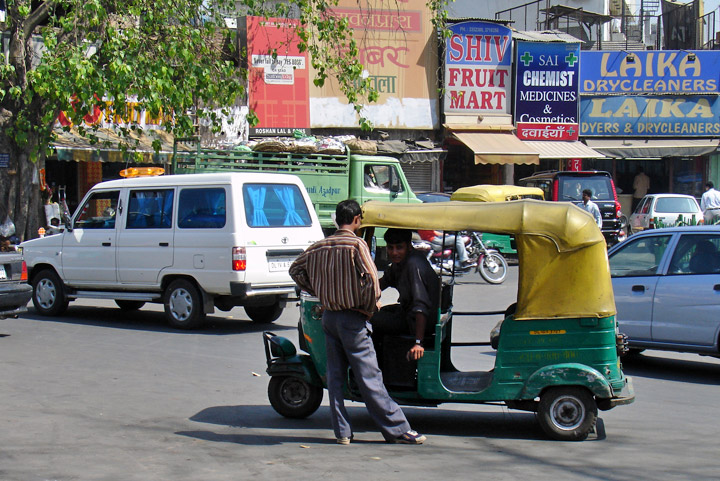
Auto-Rickshaw
powered by a two-cycle motorcycle engine, made by Bajaj

waiting for a rider
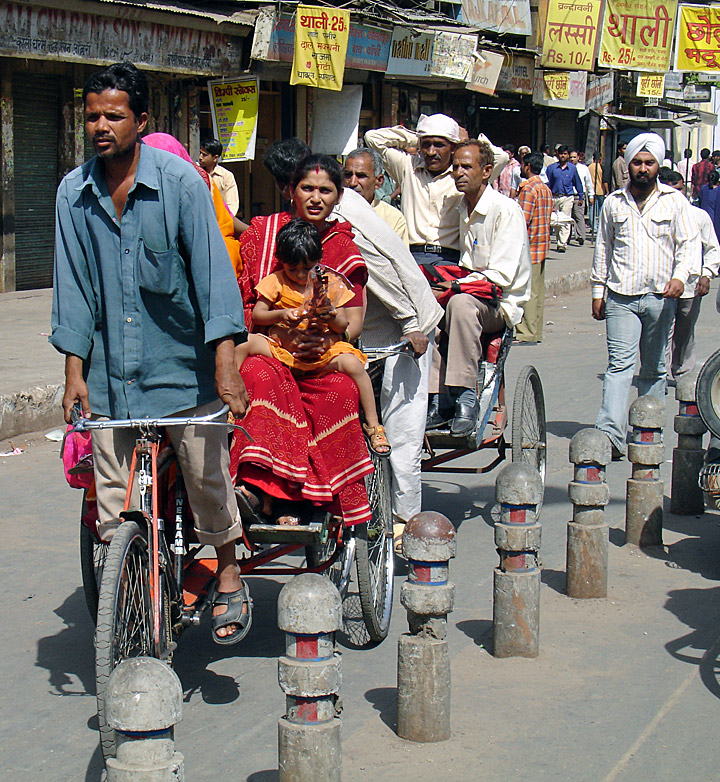
Pedicab or Cycle-Rickshaw
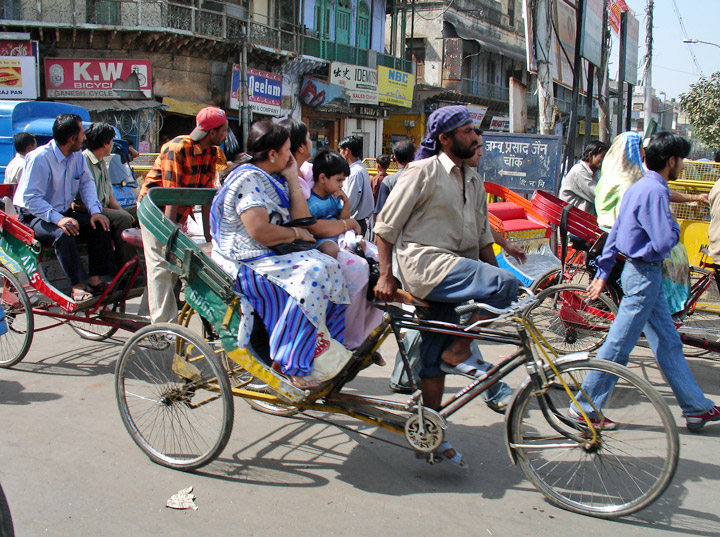
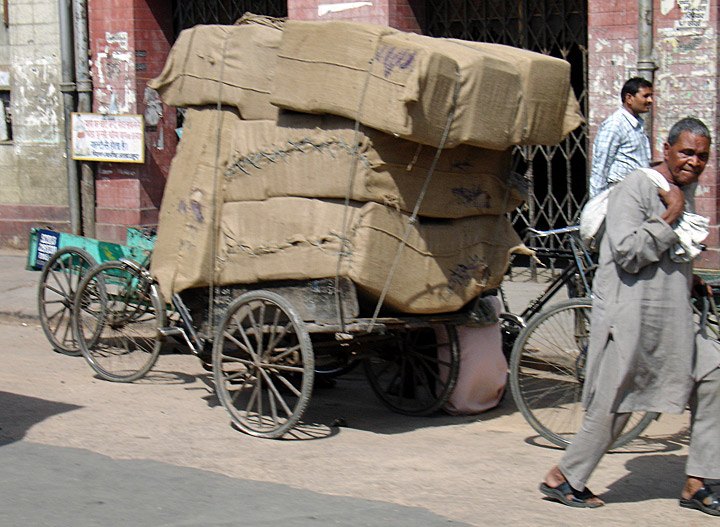
and large cargosos
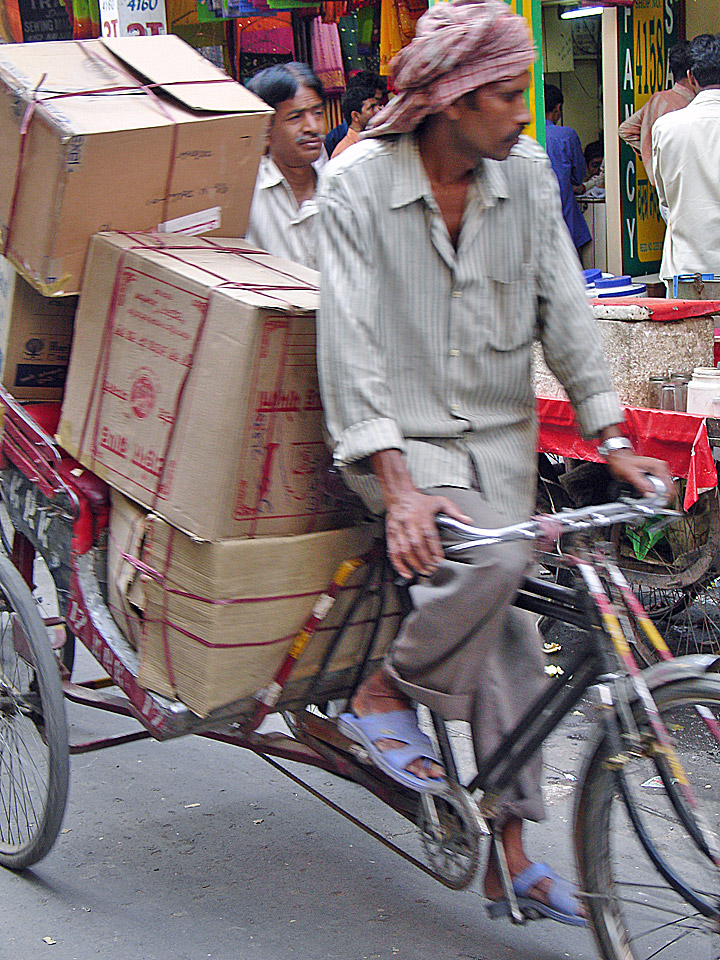
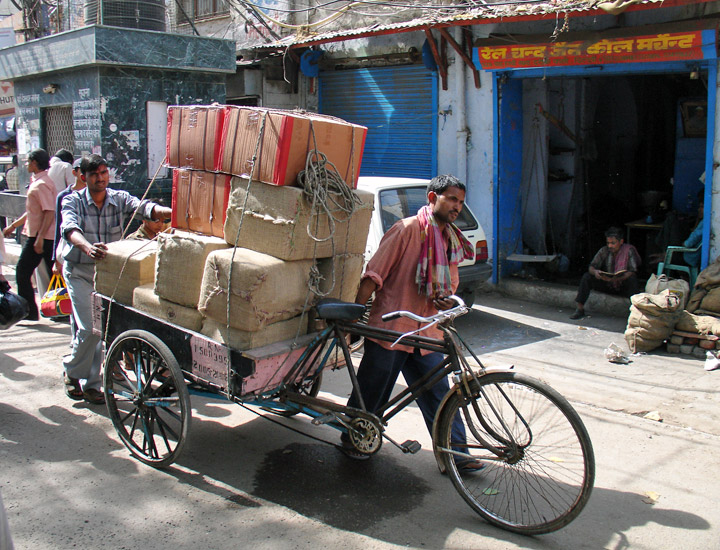
for delivery to shops

or on the shoulders
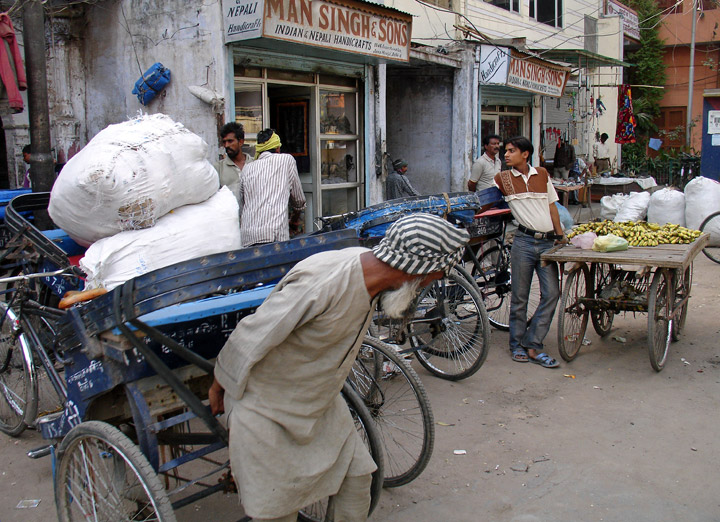
Delhi’s bus system is for thrill-seekers, anthropologists and those with time on their hands. Buses are generally hopelessly crowded and driven by maniacs. Avoid them altogether during rush hours; otherwise, try boarding or leaving at the beginning or end of a route because there’s more chance of a seat and less chance of being trampled to death. There are some seats reserved for women on the left-hand side of the bus.
There are plenty of metered yellow-and-black taxis, but invariably the meters
are out of date, not working or the drivers will simply refuse to use them.
Negotiate a fare before you set out. Auto-rickshaws are generally faster than
taxis on short trips and cost half the price. Negotiate a fare before you board
and make sure your will is in order. Six-seater motorcycle rickshaws run fixed
routes at fixed prices and are good value during rush hours. Cycle rickshaws are
banned from New Delhi itself, but can be handy for traveling around ‘Old’ Delhi.
Courtesy of Lonely Planet